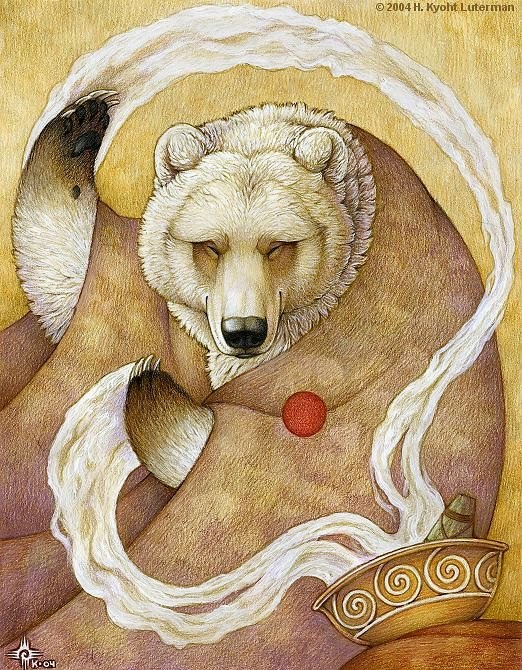Did you know?
What is a Winter Count?
A winter count is a pictographic calendar or calendar history composed of ideographs or glyphs. These tribal records were kept by Blackfeet, Mandan, Kiowa, and especially the Lakota or Teton Sioux. There are approximately 100 in existence (but many of these are duplicates). (Burke) The Dohasan Calendar of the Kiowa, for example, covers 60 years from 1832 to 1892. As time was reckoned from the first snow to first snow, a winter count image would represent an overlapping year, for example, 1833-1834. In Sioux, a winter is Òwaniyetu." Calendars were called "waniyetu yawapi" from verb yawa to count or read, or Òwinter recordsÓ or Òcounting backÓ The person who painted the yearly drawings and kept the calendar in his care was called the Keeper, a tribal historian.. He selected a single remarkable even in consultation with others to denote a year.Winter counts documented episodes in the history of an extended family or tiyospaye who camped together. The images functioned as mnemonic devices to trigger memories. Natural and cultural, historical depicted. The glyphs may represent personal events, disease epidemics, battles, horseraids, or astronomical events. In the Sam Two Kills Winter count, the death of Turning Bear, who was killed by a train, is depicted (just above Two Kill's left foot in the John Anderson photo).
Often the years are recorded in a spiralling pattern going from the center to the periphery, but this is by no means standard. The calendars are painted on buffalo hides and later some, like the Anderson winter count, were copied to cloth and paper.
The first winter count to receive scholarly analysis was Lone Dog Winter Count. Since Garrick Mallery's pioneering work in 1877, a number of other winter counts were discovered in the private collections of persons who obtained them in the late Indian Wars/Early reservation period. For these known winter counts, systematic efforts were made by Mallery and others to obtain accurate interpretations of the glyphs from the "keepers" and other Native consultants who knew their meanings in the late 1800s. See an example from Mooney's description of the Kiowa Winter Count, Summer 1841 glyph. In 1886, in the 4th Annual Report of the Bureau of American Ethnography, Mallery compares five winter counts : Lone Dog (Yantonai), Flame (Two Kettle), Little Swan (Minneconjou) , plus Mato Sapa/Black Bear (Miniconjou). Included in MalleryÕs study is a section written by William H. Corbusier who describes two Oglala counts kept by American Horse and Cloud Shield. Corbusier also had access to the White Cow Killer (Oglala) account and the Battiste Good (Brule) account. The latter is unusual in that it begins in the year 900 A.D. and includes thirteen generations of seventy years (or camp circles) with individual images for the years 1700 to 1879. The Good winter Count was published in the 10th BAE Report with color plates.Swift Dog (Hunkpapa) was collected by scholar Frances Densmore. James Howard built on the foundation established by Garrick Mallery. He brought more calendars and interpretations to light in the mid-20th century and did significant comparative analysis. See Howard's "Carried Flags around Winter" from British Winter Count for 1796-97. Bibliography
Sources:
Chamberlain, Von Del, “Astronomical Content of North American Plains Indian Calendars,” Archaeoastronomy, 15 (5) 1984.
Online: Burke, Christina E. “Collecting Lakota Histories: Winter Count Pictographs and Texts in the National Anthropological Archives,” American Indian Art Magazine, 2000-2001
McCoy, Ronald T. "Winter Count: Teton Chronicles to 1799" (No. Ariz. Ph.D. disst. 1983)
Photo: Curtis, Edward 1908.



